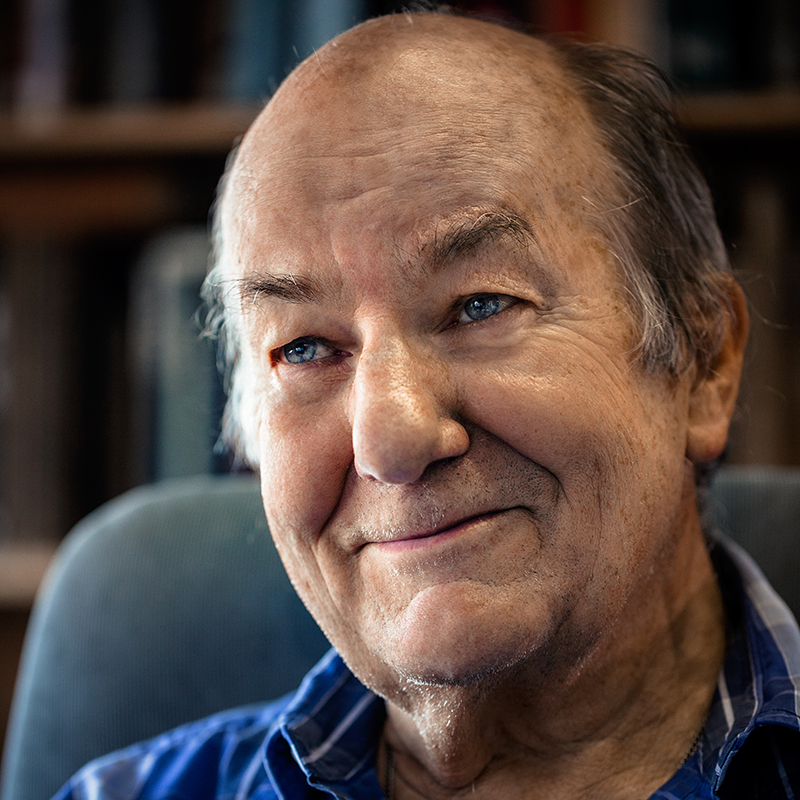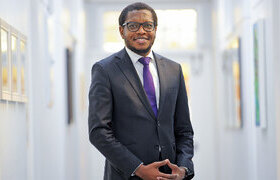John Joseph Gurney: 1940–2019
05 November 2019 | Written by Philip Janney, Rory Moore and Steve Richardson. Photo David Swart.
It is with great sadness that we share news of the death of Emeritus Professor John Gurney.
Gurney spent most of his early life in Liverpool, England, where he was an avid sportsman. He later moved with his family to Cape Town and enrolled at the University of Cape Town (UCT) in 1959.
No doubt influenced by Professor Louis Ahrens (Professor of Chemistry and later Geochemistry), Gurney obtained his BSc in chemistry and undertook his postgraduate studies in the newly formed Department of Geochemistry, where he completed his PhD in 1968 on the geochemistry of eclogite xenoliths.
Gurney spent 1970 in Washington DC in the United States (US) as a postdoctoral fellow at the Smithsonian Institution under mineralogist George Switzer. It was during this time that he first made the crucial link between the composition of peridotitic garnet inclusions in diamonds and that of chromium-rich subcalcic garnets occurring in harzburgite xenoliths, and as indicator minerals in some kimberlites.
Soon after returning from the US, Gurney was hired as a member of academic staff in the Department of Geochemistry at UCT. He was co-convenor of the first International Kimberlite Conference (IKC) in Cape Town in 1973. This conference was pivotal in creating the symbiotic relationship between academia and the diamond industry, a relationship that continues until today.
Shortly after the IKC, he established the Kimberlite Research Group at UCT, which has a substantial record of peer-reviewed publications. Gurney authored or co-authored more than 300 research papers and articles in journals and books over his academic career (spanning more than 50 years) in virtually all aspects of mantle petrology and geochemistry, kimberlites, diamond geology and exploration.
He was a highly sought-after and prolific supervisor of postgraduate students, supervising approximately 20 honours, 18 master’s and 16 doctoral students to graduation at UCT, and acting as co-supervisor for several PhD students at other universities.
Over the span of his career, he established the world-famous UCT Mantle Room, now the John J Gurney Upper Mantle Research Collection – the worldʼs most extensive collection of southern African mantle xenoliths and kimberlites. He generously made the collection available to researchers from around the world.
In the last few years of his life Gurney used his collection to create a museum-type exhibition – Messengers from the Mantle. The exhibit was unveiled at the 2016 International Geological Congress and has been displayed at several international scientific meetings and other venues to great acclaim.
As well as being an exceptional scientist, Gurney was equally successful in business and industry. In 1995 John and his son James founded the Mineral Services Group of companies, providing specialist consulting and laboratory services to the diamond industry. John also led several successful public company diamond-exploration and marine-mining ventures, notably Benguela Concessions and Motapa Diamonds. Gurney’s mineral chemistry approach was crucial to the discovery of diamondiferous kimberlites in northwestern Canada, yielding a major economic benefit to the region and to Canada’s economy.
He received several academic and research honours throughout his career. He was a Life Fellow of UCT and a Fellow of the Royal Society of South Africa and the Geological Society of South Africa (GSSA). He received the Draper Medal from, and was an Alex du Toit Memorial Lecturer for, the GSSA. He was awarded the Hugo Dummett Award from the British Columbia Yukon Chamber of Mines in Canada, and he won the silver medal from, and was a distinguished lecturer for, the Society of Economic Geologists.
In addition to his impressive professional achievements, Gurney was an accomplished sportsman and had a great enthusiasm for life. He had a remarkable talent for storytelling and a wonderful sense of humour. He was an extraordinary role model and mentor, not only to young scientists, but also to his children and grandchildren.
The world is a lesser place without him, but he has left a vast and enduring legacy, including students and colleagues who will carry his vision forward.
He will be remembered with fondness by many.
 This work is licensed under a Creative Commons Attribution-NoDerivatives 4.0 International License.
This work is licensed under a Creative Commons Attribution-NoDerivatives 4.0 International License.
Please view the republishing articles page for more information.









